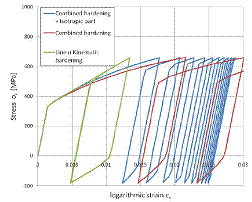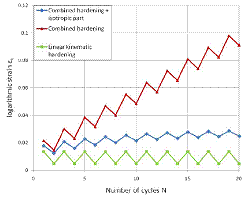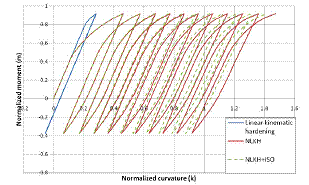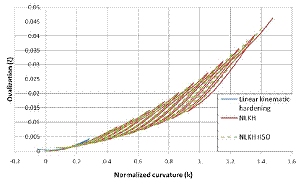Application of the Armstrong-Frederick Cyclic Plasticity Model for Simulating Structural Steel Member Behavior
by George Varelis
Graduate Diploma Thesis, March 2010
ABSTRACT
The current study examines the Armstrong - Frederick cyclic plasticity model and evaluates its performance on simulating structural steel member behavior. The formulation of the constitutive equations and their numerical implementation in an in-house finite element code are discussed in detail. The performance of the model on the prediction of the cyclic plasticity related phenomena such as the Bauschinger effect and the accumulation of plastic strain is evaluated through appropriately selected examples. The behavior of a pipe subjected to cyclic bending and cyclic bending in the presence of constant internal/external pressure is examined with the use of finite element models adopting the Armstrong - Frederick model. Finally, the UOE manufacturing process and the effect it has on the maximum collapse pressure of the produced pipe is simulated accurately. The predictions of the isotropic hardening model, the linear kinematic hardening model and the Armstrong-Frederick model are compared with the corresponding predictions of more elaborate model developed and implemented elsewhere adopting the "Bounding Surface" concept.


Figure 1:Non-symmetric (stress-controlled) axial cyclic loading of a steel specimen (ratcheting).


Figure 2:Non-symmetric moment-controlled cyclic bending of a tubular (pipe) member.